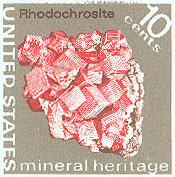
|
History of Geology |

Born: Georg Bauer, 24 Mar. 1494, Glauchau, Saxony.
Died: 1555 at Chemnitz.
| Abstract | Introduction |
| Major works | Later life |
| Historical assessment | Related websites |

|
History of Geology |

Born: Georg Bauer, 24 Mar. 1494, Glauchau, Saxony.
Died: 1555 at Chemnitz.
| Abstract | Introduction |
| Major works | Later life |
| Historical assessment | Related websites |
Agricola's two greatest works are De Natura Fossilium (1546) and De Re Metallica (published posthumously in 1556). The first established his claim as the father of mineralogy and included a classification of minerals (then called fossils) based on geometric form. The second was a comprehensive summary of all aspects of mining and metal production. These and all his other works were written in Latin as was customary for his time. Agricola remained steadfastly Catholic, in spite of rampant Protestant militancy in the German states, and late in life he enjoyed a diplomatic career. He was highly regarded by his contemporaries, and his scientific accomplishments have stood the test of time well.
Almost nothing is known about his birth or youth. The family name "Bauer" means peasant. In
1514-18 he attended the University of Leipzig and received a B.A. degree in classics and
philosophy. From 1518-22 he taught Latin and Greek at Zwickau school and became the principal.
He then returned to Leipzig, where the university was in disarray over religious quarrels. In
1523-25 he studied in Italy—Bologna, Padua (?) and Venice. Subjects included clinical medicine,
natural science and philosophy. While in Italy, he became a good friend of Erasmus (the
humanist) and became familiar with More's book on Utopia. The latter inspired him to
study science.
Agricola returned to Saxony in 1526, where he was town physician of Joachimsthal (now
Jáchymov in the Czech Republic). This location was in the booming mining district of
Bohemia, a Paleozoic massif in central Europe. The town was only 11 years old with several
1000 inhabitants. Silver gave the local towns considerable political autonomy from central
government. Freiberg, which was later home to Werner, was only 50 miles away. This was the
richest metal mining district in Europe and was dominated by German miners.
These and several other books were written in Latin, as was typical of the time. This proved
difficult, as German mining terminology did not exist in Latin, which made Agricola's books
hard to read even by contemporary colleagues. Only these two works were translated into English, and no
English biography has been published. De Re Metallica was translated in 1912 by Herbert Hoover (later 31st President of the U.S.) and his wife Lou Henry. Hoover was an authority on mining and metallurgy, and his wife was an accomplished geologist. The translation took five years and required much experimentation to clarify uncertain points (Takacs 2000). In 1955, the East German Academy of Science published a special volume on Agricola to celebrate the 400th anniversary of his death.
Late in his life, he enjoyed a diplomatic career. He was first appointed burgomaster (mayor)
of Chemnitz in 1546, a post he held for some time. He also was appointed as emissary in
negotiations between Protestant German states and the Holy Roman Emperor. Perhaps being a
Catholic was deemed desirable for such a mission. Religious tolerance, from which Agricola
had benefited during most of his lifetime, deteriorated with a series of religious wars
toward the end of his life.
Return to history of geology syllabus or schedule.Introduction and early life
Agricola was born on the threshold of European Renaissance. Gutenberg's first book had been
printed 40 years before. Columbus had just returned from America. Luther, who began the
Reformation, was born just one year before. It was a period of exploration and rediscovery
of learning. Italian universities were the center for science, medicine and philosophy.
Agricola, who is often called the father of mineralogy, was highly educated and well
regarded in his own time and later. He was among the first to found a natural science based
observation and field experience, as opposed to mere speculation.Major Works
By his own account, Agricola devoted all his spare time to mines. He initially hoped to
discover new medical drugs from mine ores. His first publication, Bergmannus
(1530), was a brief introduction to mining and mineralogy in the form of a dialog between
an experienced miner and two philosophers. Loren Bergman was his principal informant. In
1530, Agricola resigned his position to travel and observe for a couple of years. In 1533,
he took a similar position as town physician in Chemnitz. He enjoyed ordinary success as a
physician. He made many references to occupational diseases of miners, he introduced the
practice of quarantine to Germany, and followed his own observation rather than medical
dogma in treatment of patients. His two greatest geological works deal with mineralogy
and mining.
Agricola's Later Life
Agricola was married (perhaps twice) and had several children, although none of his
descendents have been traced more than two generations. He never accepted the Reformation;
he remained steadfastly Catholic. Politics, complicated by religion of the time, were
complex, but he always seemed to find favor and support from local authorities. Protestant
militancy was rampant in the German states and was exploited by outside powers (France and
England).Historical Assessment
There is no doubt Agricola played a major role in early Renaissance scientific development
in Europe. His work was highly regarded by contemporaries, and his accomplishments have
stood the test of time well. His work was a strong influence on later geologists. Related Websites
Related Websites
Reference

© J.S. Aber (2017).